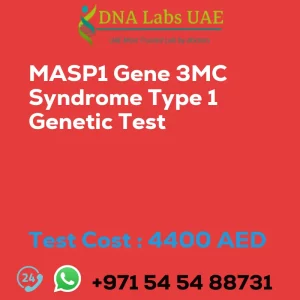BONE MARROW EXAMINATION PANEL 2 Test
Test Cost: AED 500.0
Symptoms Diagnosis: Disorders of Hematopoiesis
Test Components
- Microscopy of Bone Marrow Aspirate & Peripheral Blood
- Special Stains
- Complete Blood Count (CBC)
- Histopathology
Price: 500.0 AED
Sample Condition: 2 mL (1 mL min.) Bone Marrow Aspirate in 1 Lavender Top (EDTA) tube AND 4 Bone Marrow Aspirate Smears AND 4 mL (2 mL min) whole blood in 1 Lavender Top (EDTA) tube AND 2 peripheral blood smears. Air dry & fix all smears in 100% Methanol for 30 minutes AND Bone Marrow Trephine biopsy in 10% formal saline. Ship refrigerated. DO NOT FREEZE. Duly filled Bone Marrow Examination Requisition Form (Form 14) is mandatory.
Report Delivery: Sample Daily by 6 pm; Report 5 Working days
Method: Microscopy of Leishman / Jenner-Giemsa stained smears, Electrical Impedence, VCS, HPE
Test Type: Disorders of Hematopoiesis
Doctor: Hematologist
Test Department: HISTOLOGY
Pre Test Information: Duly filled Bone Marrow Examination Requisition Form (Form 14) is mandatory.
Test Details
The Bone Marrow Examination Panel 2 test is a set of tests that evaluate the health and function of the bone marrow. This panel typically includes the following tests:
- Complete Blood Count (CBC): This test measures the number of red blood cells, white blood cells, and platelets in the blood. Abnormalities in these cell counts can indicate bone marrow disorders.
- Peripheral Blood Smear: A blood smear is examined under a microscope to evaluate the size, shape, and appearance of blood cells. It helps identify abnormalities in cell morphology, such as immature or abnormal cells.
- Bone Marrow Aspiration: This procedure involves the removal of a small sample of bone marrow from the hip bone or sternum. The sample is examined under a microscope to evaluate the cellularity, presence of abnormal cells, and other bone marrow characteristics.
- Bone Marrow Biopsy: A bone marrow biopsy involves the removal of a small piece of bone and marrow tissue for examination. It provides information about the architecture of the bone marrow, including the presence of abnormal cells, fibrosis, or other structural abnormalities.
- Flow Cytometry: This test uses fluorescent antibodies to identify and quantify specific cell populations in the bone marrow. It helps diagnose and classify various blood disorders, including leukemia and lymphoma.
- Cytogenetic Analysis: This test examines the chromosomes within bone marrow cells to detect any abnormalities, such as translocations or deletions. It is particularly useful in diagnosing certain types of leukemia and other genetic disorders.
- Molecular Testing: This test analyzes the DNA or RNA within bone marrow cells to identify specific genetic mutations or abnormalities. It is often used to detect specific gene mutations associated with certain blood disorders.
These tests are typically performed together to provide a comprehensive evaluation of the bone marrow and aid in the diagnosis of various blood disorders, such as leukemia, lymphoma, myeloma, and aplastic anemia. The results of these tests help guide treatment decisions and monitor the response to therapy.
| Test Name | BONE MARROW EXAMINATION PANEL 2 Test |
|---|---|
| Components | *Microscopy of Bone Marrow Aspirate & Peripheral Blood*Special Stains*CBC*Histopathology |
| Price | 500.0 AED |
| Sample Condition | 2 mL (1 mL min.) Bone Marrow Aspirate in 1 Lavender Top (EDTA) tube AND 4 Bone Marrow Aspirate SmearsAND 4 mL (2 mL min) whole blood in 1 Lavender Top (EDTA) tube AND2 peripheral blood smears. Air dry & fix all smears in 100% Methanol for 30 minutes ANDBone Marrow Trephine biopsy in 10% formal saline. Ship refrigerated. DO NOT FREEZE. Duly filled Bone Marrow Examination Requisition Form (Form 14) is mandatory. |
| Report Delivery | Sample Daily by 6 pm; Report 5 Working days |
| Method | Microscopy of Leishman /Jenner-Giemsa stained smears, Electrical Impedence, VCS, HPE |
| Test type | Disorders of Hematopoiesis |
| Doctor | Hematologist |
| Test Department: | HISTOLOGY |
| Pre Test Information | Duly filled Bone Marrow Examination Requisition Form (Form 14) is mandatory. |
| Test Details |
The Bone Marrow Examination Panel 2 test is a set of tests that evaluate the health and function of the bone marrow. This panel typically includes the following tests: 1. Complete Blood Count (CBC): This test measures the number of red blood cells, white blood cells, and platelets in the blood. Abnormalities in these cell counts can indicate bone marrow disorders. 2. Peripheral Blood Smear: A blood smear is examined under a microscope to evaluate the size, shape, and appearance of blood cells. It helps identify abnormalities in cell morphology, such as immature or abnormal cells. 3. Bone Marrow Aspiration: This procedure involves the removal of a small sample of bone marrow from the hip bone or sternum. The sample is examined under a microscope to evaluate the cellularity, presence of abnormal cells, and other bone marrow characteristics. 4. Bone Marrow Biopsy: A bone marrow biopsy involves the removal of a small piece of bone and marrow tissue for examination. It provides information about the architecture of the bone marrow, including the presence of abnormal cells, fibrosis, or other structural abnormalities. 5. Flow Cytometry: This test uses fluorescent antibodies to identify and quantify specific cell populations in the bone marrow. It helps diagnose and classify various blood disorders, including leukemia and lymphoma. 6. Cytogenetic Analysis: This test examines the chromosomes within bone marrow cells to detect any abnormalities, such as translocations or deletions. It is particularly useful in diagnosing certain types of leukemia and other genetic disorders. 7. Molecular Testing: This test analyzes the DNA or RNA within bone marrow cells to identify specific genetic mutations or abnormalities. It is often used to detect specific gene mutations associated with certain blood disorders. These tests are typically performed together to provide a comprehensive evaluation of the bone marrow and aid in the diagnosis of various blood disorders, such as leukemia, lymphoma, myeloma, and aplastic anemia. The results of these tests help guide treatment decisions and monitor the response to therapy. |








